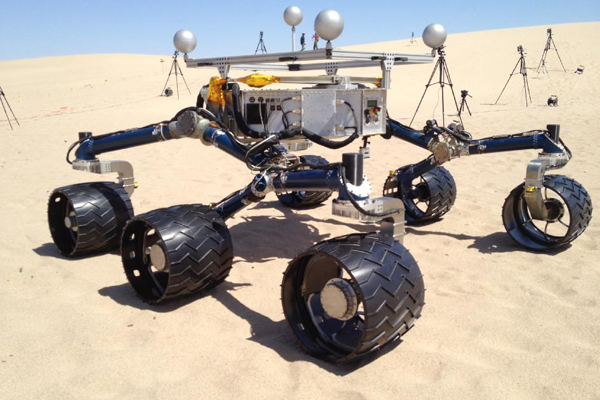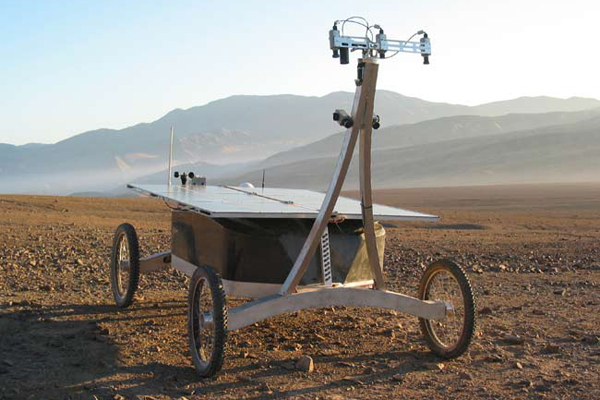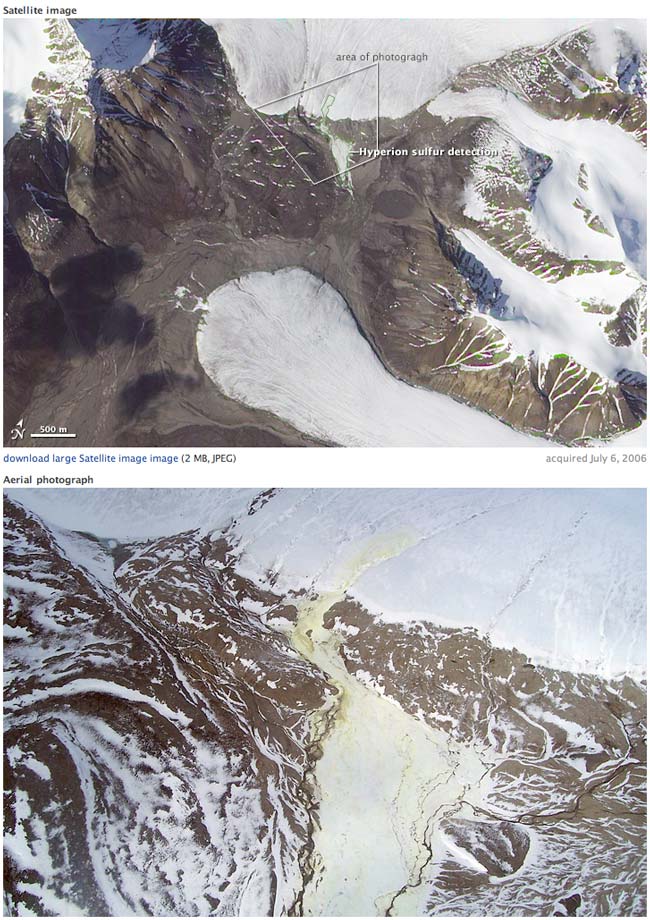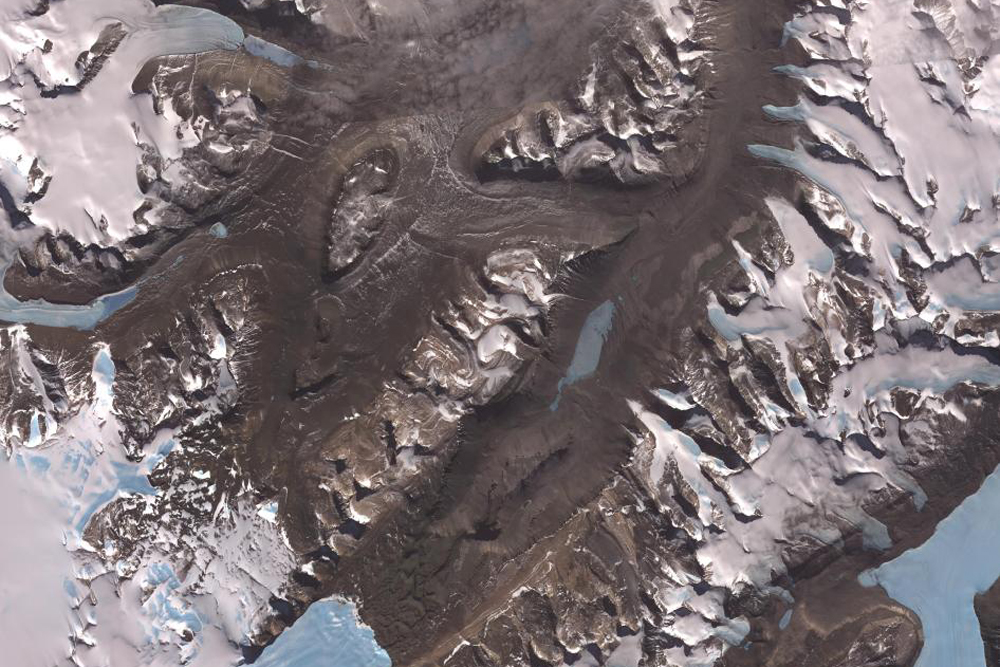7 Most Mars-like Places on Earth

Mars on Earth

Before NASA's Curiosity rover was en route to Mars to answer questions about the planet's potential to host microbes now or in its past, the robot first had to cut its teeth in California's Death Valley. One of the hottest places on Earth is also one of scientists' favorite terrestrial stand-ins for Mars, due to its arid climate and unique geology.
Death Valley is one of several places around the world that serve as Mars stunt doubles as NASA scientists test the gadgets that will probe the Red Planet. Some of these places are hot, some are cold. Some are arid, some are covered in ice. All of them are among the harshest places on Earth, which is why scientists continue to trek to these spots to test their high-tech toys before shooting them into space.
Atacama Desert, Chile

One of the driest places on Earth, the Atacama Desert is a 600-mile-long (966 kilometers) plateau in South America. The desert is so dry that it's nearly sterile about as Mars-like a place as Earth has to offer.
In 2004, NASA-funded scientists spent four weeks in the Atacama, studying the dearth of life there for clues about how life could survive on Mars. The arid region became a proving ground for robots looking to fine-tune their life-form detection skills that could help in the search for life on Mars.
The desert stays dry because of a so-called rain shadow a dry area on the leeward side of the Chilean Coast Range, combined with a cold offshore current that helps cap any moisture from breaking through.
Some weather stations in the area have never received rain, so in 2011 the region made global headlines when 31.5 inches (80 centimeters) of snow fell in the Atacama, which was its heaviest snowfall in two decades.
Lake Vostok, Antarctica

When a team of Russian scientists drilled into the previously untouched waters of Lake Vostok, buried under more than 2 miles (3 km) of Antarctic ice, in 2012, the science world watched closely in hopes that the expedition would offer clues about how life could have survived on frigid Mars, where the average temperature is about minus 80 degrees Fahrenheit (minus 60 degrees Celsius).
Get the world’s most fascinating discoveries delivered straight to your inbox.
When an ice sheet covered the lake around 34 million to 14 million years ago, the lake was sealed from the outside world. Scientists suspect that the massive freshwater lake could be home to cold-loving creatures that have been living in darkness under the ice for millions of years. That's similar to what might be expected on Mars.
Pico de Orizaba, Mexico

Say humans make it to Mars, and decide to colonize the Red Planet. How will we make it habitable? That's what researchers in Mexico have been working on for years.
At the treeline on the Pico de Orizaba volcano in Mexico one of the world's highest treelines scientists are studying how life first crept up these cold slopes. What they find could help turn Mars into a habitable planet.
The Pico de Orizaba Volcano, which last erupted in 1846, stands at 18,619 feet (5,675 meters). The treeline extends to about 13,100 feet (4,000 m), one of the highest elevations on Earth capable of supporting life.
Pines on Mars might sound far-fetched, but for years scientists have been hiking up and down the mountain in search of clues about how life could be jump-started in a harsh climate such as on Mars. What they find here at the extreme edge of life could get the ball rolling on Mars in a few generations.
Ellesmere Island, Canada

The northernmost landmass on Earth is also at the leading edge for Mars research. Ellesmere Island is the 10th largest landmass on Earth and Canada's third largest island. The island's largest city, Grise Fiord, is home to 141 people. Here in the frozen Arctic, scientists have been testing a drill that could some day drill into Mars in search of water.
In 2006, NASA engineers spent two weeks drilling a 6-foot deep (1.8 m) hole powered by a just a light bulb's-worth of power (about 60 watts). The tool, a hybrid oil rig/household drill is portable so it can be carried into space.
A similar drill may one day be used by astronauts to bore into the polar caps of Mars in search of water and life.
Ellesmere Island is in Canada's Nunavut Territory, some 690 miles (1,110 km) from the North Pole.
Devon Island, Canada

Manned missions to Mars might be 20 years away, but nearby to Ellesmere Island, Devon Island is also a hotspot for Mars research. Also in the Nunavut Territory in the Canadian High Arctic, Devon Island is the world's largest uninhabited desert island. It's cold and dry, just like Mars. But one natural feature has lured scientists from friendlier climates: a 25-milewide (24 km) impact crater.
The 23-million-year-old crater is perfect for prepping manned missions to Mars. The Haughton Crater, as it's known, has hosted NASA missions since 1997. More recently, scientists have tested a full-scale Mars-prototype deep drill at a site within the crater that is as similar to Mars as possible on Earth.
Dry Valleys, Antarctica

Scientists have also been busy testing drills at another cold location: Antarctica's Dry Valleys. In 2009, scientists with NASA's IceBite project tested a set of ice-penetrating drills in the McMurdo Dry Valleys to see which one would work best on a future mission to the Martian polar north.
Scientists think that Mars' polar north might have once supported life. This region used to receive much more sunlight several million years ago, but the planet's orbit and rotation axis angle with respect to the sun have since shifted. More sunlight means water might have been possible, and where there's water, there can be life.
NASA's Phoenix lander found a small patch of soil covering a layer of ice at the Martian polar north region. Antarctica's Dry Valleys are the only place on Earth where this setup exists. So it's here that drills tested could someday search for water and life on Mars.
Death Valley, California

NASA's new Curiosity rover was tested exhaustively in Death Valley. As a stand-in for a Martian crater, scientists tested how Curiosity will handle the harsh Mars terrain.
Researchers have flocked to Death Valley for decades to study the desert's ancient rock layers and learn about Earth's history. But the hot desert also helps scientists prepare for any hurdles that their robots might encounter on Mars.
The Curiosity rover is part of NASA's $2.5 billion Mars Science Laboratory (MSL) mission, which launched in November and should hit Mars' Gale Crater on Aug. 5. The rover's goal is to see if Gale Crater is hospitable to microbial life, or if such life was ever possible there.
Death Valley isn't a perfect replica of Mars because the desert is too hot. Death Valley holds the record for the highest temperature in the Western hemisphere at 134 degrees Fahrenheit (56.7 degrees Celsius). The temperature on Mars tops out around 23 F (minus 5 C). But Death Valley is home to some of the best fossilized stromatolites in western North America, some more than 1 billion years old.
Stromatolites are created by microbial mats that trap sediment and grow in layers. Such a find on Mars with raise eyebrows and might suggest a place hospitable to microbial life.


